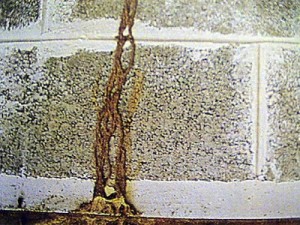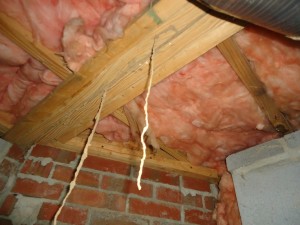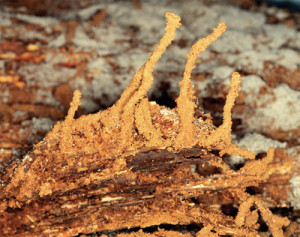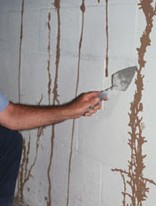How Termites Find Food
Foraging termites create a system of branching, making pencil-sized tunnels in the soil as they look for food. These exploratory tunnels expand out in a star burst pattern from a central point. This systematic and radiating search pattern of tunnels helps to eliminate repeat searches in the same area. As they dig, they come into contact with buried wood in the process. When food is found, other termites are recruited to the food source and non-productive tunnels are closed off. The foraging range of a single termite colony is difficult to predict. Small colonies may forage over only a few yards if food is plentiful. Some larger colonies may forage over areas the size of a football field.
Daily foraging is influenced by weather factors such as temperature and moisture. Foraging activity tends to be the greatest in areas of higher soil moisture. Termites also respond to chemical odors given off by plants and decaying wood, but they can only detect these odors from a short distance.
Foraging termites produce a variety of chemicals called pheromones that influence their behavior. These pheromones are basically odors that send messages to other termites in the colony. While tunneling underground, the foraging termites lay down a trail of pheromone which they secrete from glands on their abdomen. When a food source is located, the odor trail is intensified to recruit other termites to the feeding site. However, the intensity of the recruitment effort (odor trail) is influenced by soil temperature, moisture and compaction as well as the size and quality of the food source. More permanent working mud tubes are then constructed to establish a highway from the underground galleries directly to the new food source.
Subterranean termites also forage above ground for sources of food, like the structural wood in homes and other structures. In order to protect themselves from harm while foraging above ground, termites build 4 types of tubes.
~Termite workers travel back and forth inside long tubes, made out of mud and fecal material, between the soil and the structure above ground. These mud tubes are called Exploratory Tubes. Termite exploratory tubes are very easy to see and are one of the best ways to identify a potential termite infestation.
~ Once a source of wood has been located, the termites establish larger, more permanent utility or working tubes.The Utility Tubes are highways running from the underground termite galleries directly to the food source. Utility tubes can cover long distances over the foundation of a building or along exterior walls to reach the wood inside.
~ Sometimes subterranean termites build another tube that runs from the structural wood back down to the ground. These tubes are called Drop or Suspended Tubes. Drop tubes are often lighter in color than the utility tubes because they contain more of the wood fiber taken from the structure. Subterranean termites construct a fourth type of mud tube in addition to those that facilitate foraging.
~ These are called Swarming Tubes. Swarming tubes are built seasonally extending only 4-8 inches above ground. These tubes provide the exit port for winged swarmers leaving the colony.
 |
 |
 |
|
| Exploratory Tubes | Utility Tubes | Drop Tubes | Swarming Tubes |
Click here to learn more about Subterranean Termites.
Click here if you live in Virginia and would like to schedule a FREE termite inspection.



































































